The Elegance Standard: Florent Nys on Upholding Champagne Billecart-Salmon’s Coveted Mantle Among the Grandes Marques
- Mona Elyafi

- Aug 16
- 8 min read
Updated: Sep 2
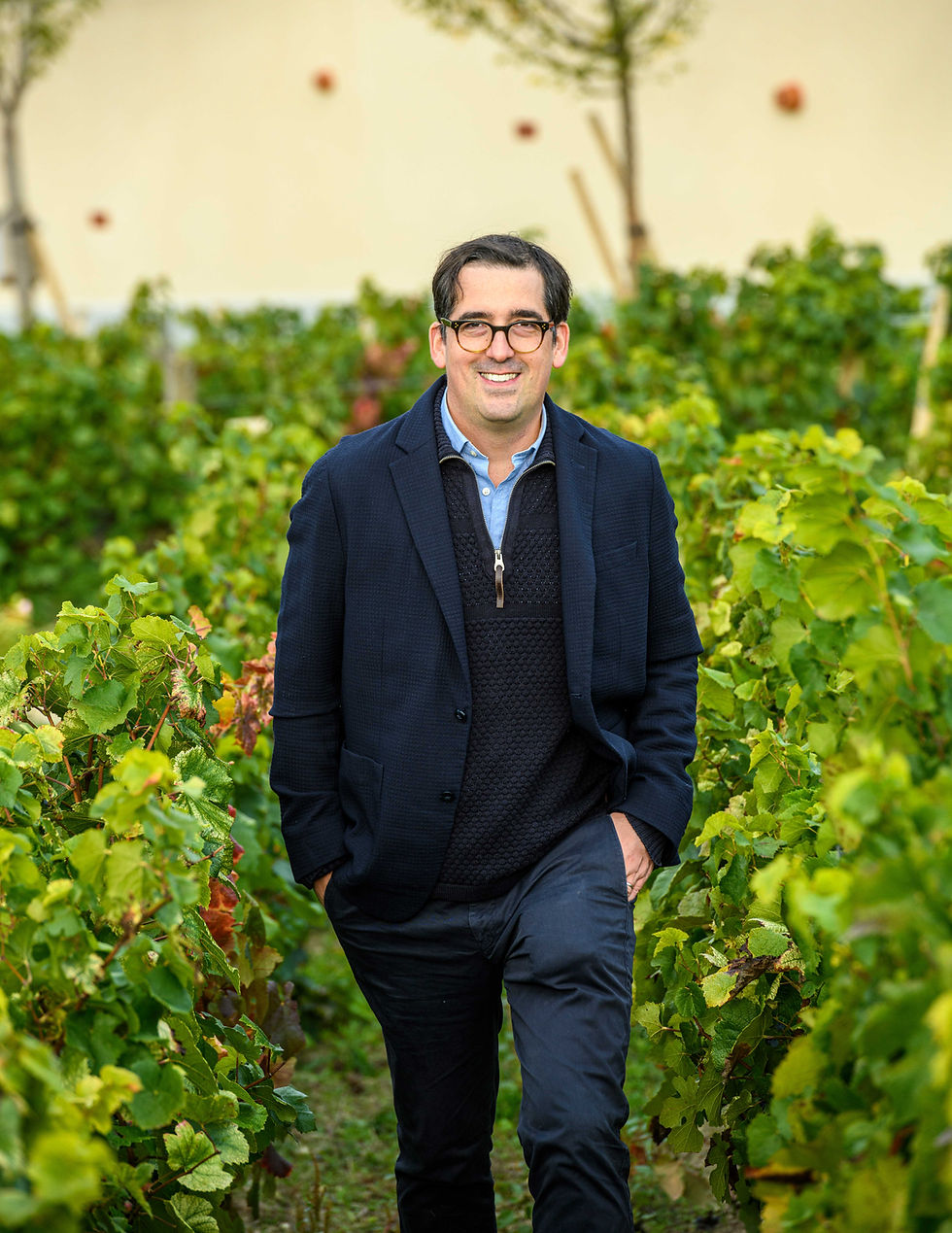
Nestled in the heart of Mareuil-sur-Aÿ, Champagne Billecart-Salmon has been crafting wines of refined elegance and finesse since 1818, when Nicolas François Billecart and Elisabeth Salmon united their lives, vineyards, and shared passion for winemaking. Their deep love for both trade and viticulture laid the foundation for an estate that still serves as the family home and headquarters today. One of the last great family-owned and managed Maisons in Champagne, it has been stewarded through seven generations by an unwavering creed: prioritize quality, honor the unique character of each terroir, and pursue excellence without compromise.
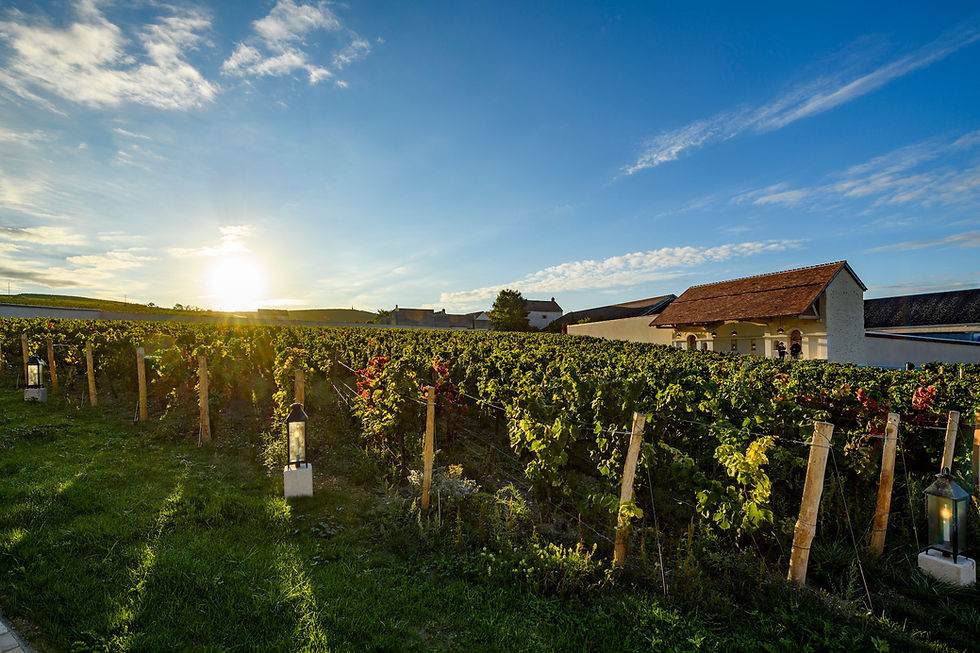
Producing around two million bottles a year, a modest volume by Champagne standards, Billecart-Salmon has earned its devoted following organically, through the genuine admiration of top chefs, sommeliers, collectors, and connoisseurs worldwide. From Michelin-starred dining rooms in Paris and New York to festive tables in Tokyo and Sydney, its wines are celebrated for their purity, precision, and balance. A defining moment came in 1999, when the Nicolas François 1959 was named “Champagne of the Millennium” by leading international critics. The House’s Rosé, in particular, has achieved iconic status for its delicacy, subtle aromatics, and exceptional drinkability, while cuvées such as Clos Saint-Hilaire and Sous Bois showcase the artistry, ingenuity, and boldness that have secured its prestige.
Equally integral to the House’s identity is its quiet yet resolute commitment to sustainability. Long before earning High Environmental Value and Sustainable Viticulture in Champagne certification in 2017, Billecart-Salmon regarded winemaking as a partnership with nature. Its philosophy is simple: respect the terroir to craft exceptional wines. This ethos comes to life in the beehives of Clos Saint-Hilaire, where barrels once used for wine now shelter pollinators that sustain vineyard biodiversity; in electric tractors and rainwater collection systems that reduce the Maison’s carbon footprint and water usage; and in a dedication to local sourcing and minimal packaging. Environmental stewardship here is not a marketing claim, it is a way of working refined over decades.
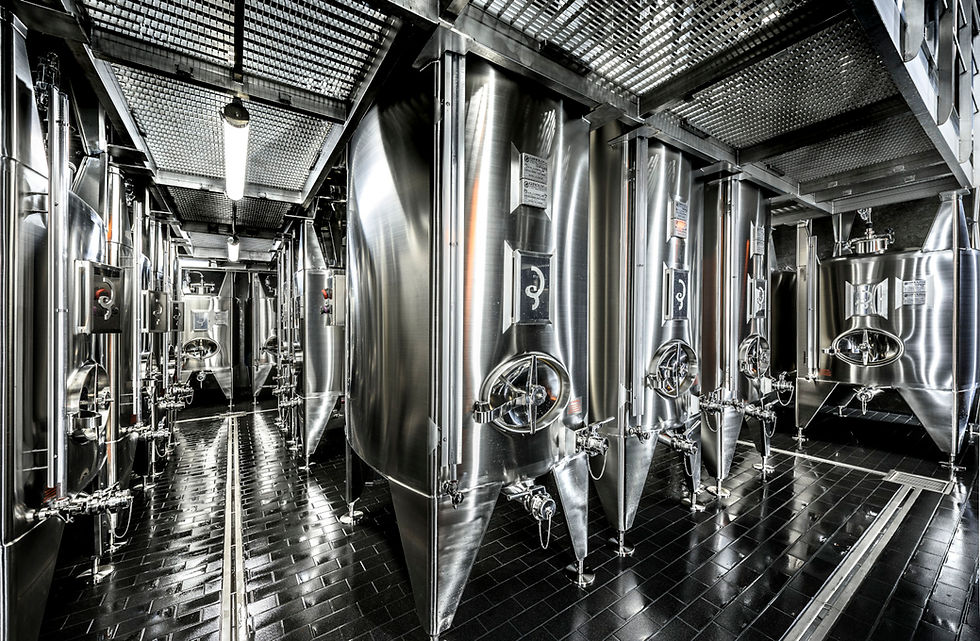
Through cholera epidemics, revolutions, and countless trials, the House has remained steadfast, its 200-year history meticulously preserved in ledgers that tell the story of every chapter from 1818 to today.
Into this storied lineage steps Chef de Cave Florent Nys. Raised in Mesnil-sur-Oger, in the heart of the Côte des Blancs, Nys grew up surrounded by vines. After studying biochemistry, he honed his craft at the University of Reims before joining Billecart-Salmon in 2005 as an apprentice under the legendary François Domi. Over more than a decade of close collaboration, Nys absorbed the House’s meticulous approach: the precision of cold settling, the balance of low-temperature fermentation, the art of blending for freshness and longevity, and above all, Domi’s unwavering commitment to elegance.
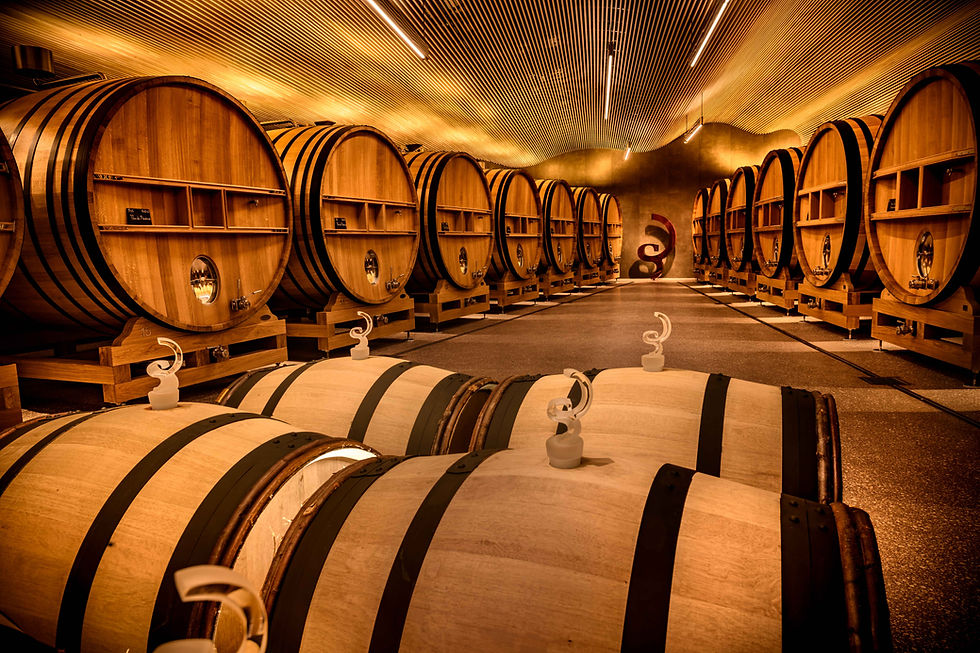
Now at the helm, Nys serves as custodian of Billecart-Salmon’s hallmark style, where elegance meets enduring finesse. Balancing tradition with thoughtful innovation, he confidently safeguards the Maison’s prestige, history, and savoir-faire while guiding it into its next chapter. Bringing his signature touch, he has refined ageing times, transitioned the entire range to extra brut for heightened precision, and experimented with blends that have become celebrated additions to the portfolio. His reimagining of the Brut Réserve (deepened with perpetual reserve wines, laced with subtle oak complexity, and extended maturation) embodies his vision: wines that speak authentically of their origins yet resonate with modern clarity. In his hands, each bottle is more than Champagne, it is a continuation of a story begun over two centuries ago, a testament to a family’s enduring vision, and a promise that the spirit of 1818 will continue to sparkle in every glass.
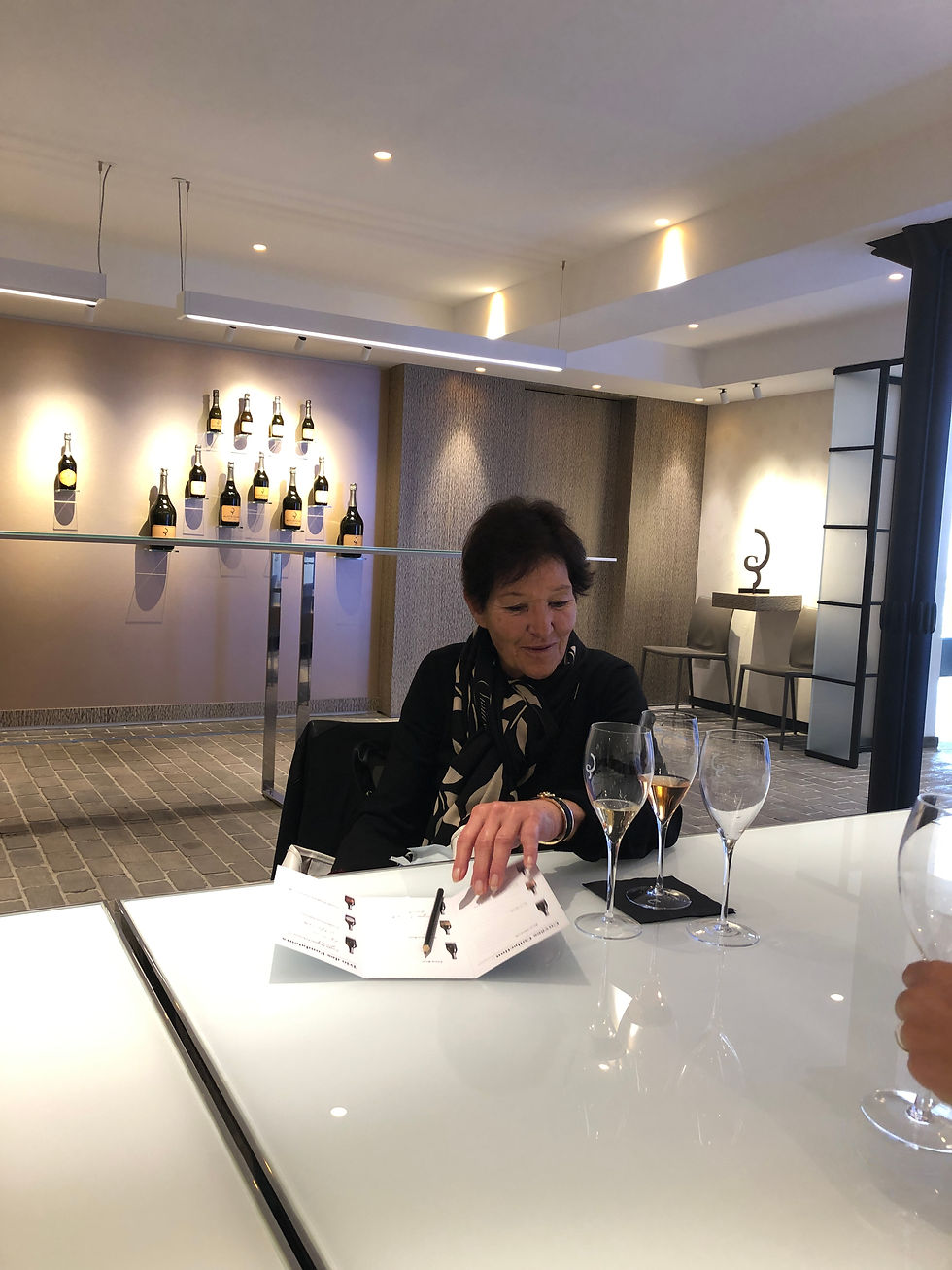
I’d been wanting to interview Florent Nys for a long time, because Billecart-Salmon occupies a special place in my heart that goes far beyond professional admiration. My love affair with Billecart-Salmon began when I stumbled upon their RED cuvée, a limited edition of their crowd-pleasing NV Brut Réserve, crafted in partnership with (RED), the charity founded in 2006 by Bono and Bobby Shriver to fight AIDS. That single bottle was my gateway into the house. Curiosity quickly turned to devotion, and by the time I discovered the extraordinary Sous Bois, I was hooked for good. But my connection to the House isn’t just about the wines. It’s bound to a memory I treasure above all others: Billecart-Salmon was the last Champagne house I visited with my mom, in July 2021, just months before she passed.

That day, Jérôme Lafouge welcomed us with warmth, generosity, and a quick wit that instantly put us at ease. He led us through an intimate, deeply engaging tour of the Maison, weaving stories that made its history and craftsmanship pulse with life. The tasting that followed was far more than a chance to savor exceptional wines, it became a truly unique experience for all of us (one that my mom cherished deeply) filled with laughter and genuine connection. Immersed in the spirit of Billecart-Salmon, that afternoon felt outside of time. And like the enduring bonds and family ties that have woven themselves into the very fabric of the House since the days of Nicolas and Elisabeth, that moment is now forever suspended in time.
I’m incredibly thrilled to have had the chance to chat with Florent Nys and dive deep into his vision and passion for carrying forward the remarkable style and fascinating legacy of Billecart-Salmon, a House that year after year continues to occupy a coveted place among the Grandes Marques, proudly embodying the pinnacle of elegance.
Could you tell us about your background and what led you to the world of Champagne?
After my parents moved from Paris to Champagne, I grew up in the heart of the Côte des Blancs, in Mesnil-sur-Oger. It was the perfect place to be immersed in the culture of vine growing and winemaking.
Naturally, after studying biochemistry, I was able to enroll in the oenology program in Reims, at the University of Oenology. This training gave me the knowledge needed for my future career, and at the same time, I actively took part in tasting courses, which helped refine my preferences in terms of regions, grape varieties, and winemaking methods.
You have worked alongside François Domi since 2005. How has that experience influenced your winemaking philosophy? What lessons or values have stayed with you?
Exactly. François Roland-Billecart and François Domi recruited me after my DNO (National Diploma of Oenology) internship at the House.
Alongside my responsibilities in the winery, François Domi and I practiced our craft every day by preparing blending or dosage samples for the tasting committee.
François Domi instilled in me a love for elegance, the pursuit of freshness in wines, and the quest for excellence.
Billecart-Salmon was founded in 1818 from a family union and a passion for wine. What responsibility do you feel today as the guardian of this heritage?
I’ve had the privilege of working at the House for nearly 20 years. My passion for wine and my love for this beautiful House drives me every day in our various projects. Always guided by the same motto and in pursuit of excellence, one question constantly arises: How can we make things even better?
Is there a story or episode from the House’s history that particularly moves you?
In 2018, the House celebrated its 200th anniversary with a family gathering that brought together the Billecart-Salmon family, our team members, and our partners.
That celebration left a deep impression on me, thanks to everyone’s extraordinary enthusiasm and the unforgettable feeling of sharing a truly unique moment together: 200 years of history and transmission.
As cellar master, how do you balance family tradition with innovation?
As you can see, the House is always striving to produce exceptional wines. We rely on traditional methods, such as cold settling and low-temperature fermentation, which have become signatures of our wines.
Innovation comes from the experiments that have proven successful, such as refining our wine aging and dosage management. Today, our entire range is extra brut, offering a more precise expression of each cuvée (rosé, blanc de blancs, sous bois, and blends). Other cuvées, which we call Les Rendez-Vous, showcase successful winemaking experiments after each harvest.
Which cuvée feels the most personal to you, the one that best embodies your signature?
I have great affection for all the House’s wines, but the one that best reflects the work we’ve done with the team since 2017 is Le Réserve. Our aim was to elevate this cuvée even further, and we accomplished significant improvements, increasing the share of perpetual reserve wines, incorporating more wines vinified in oak, and extending the ageing period to enhance complexity and terroir expression. We highlighted the cuvée’s balance and tension with an extra-brut dosage of 3g/L.
While some houses minimize the role of Pinot Meunier, Billecart-Salmon makes it a pillar, especially in Le Réserve. What appeals to you most about Meunier as a winemaker?
You’re right, we were among the first to believe in the incredible potential of the Meunier grape. With its fruity and floral flavors, Meunier is magnified by our cold vinification approach. The freshness achieved during this delicate process makes it a wonderfully gastronomic wine.
Your Rosé is celebrated for its delicacy and balance. In your opinion, what makes it so unforgettable from the very first sip?
We’re proud that our rosé brings people together, for its subtle aromas, freshness, refinement, and excellent drinkability. What makes it unforgettable comes from the savoir-faire and tradition passed down since the 1950s.
The choice to use a majority of Chardonnay in your Rosé blend is rather unusual. What role does this grape play in its structure and aromatic expression?
It’s true that there are several schools of thought in Champagne when it comes to making rosé. We opted for a rosé d’assemblage, incorporating red wine from the finest Pinot Noir terroirs dedicated to red wine production.
Chardonnay’s role is to contribute balance to the blend. It brings aromatic freshness on the nose and counterbalances the power of the Pinots Noirs on the palate. It’s essential.
That small hectare of Clos Saint-Hilaire, cultivated biodynamically, seems almost alive through its cuvée. What personal connection do you feel to this exceptional terroir and the wine it produces?
The single-vineyard cuvée Clos Saint-Hilaire expresses all the uniqueness of its terroir in Mareuil-sur-Aÿ, shaped by specific cultivation conditions, the annual climate, and the vegetative cycle. Our team’s role is to highlight the beauty of the wines from this one-of-a-kind parcel.
With that in mind, I present the tasting committee with minimal dosage options to emphasize the cuvée’s complexity and intensity. During blind tastings, we realized we preferred the sample dosed at 1g/L, which offered more tension than the one with zero sugar added.
Aging your champagnes twice as long as the AOC standard is a bold choice. How does time become an essential ingredient in Billecart-Salmon’s style?
Ageing on lees is essential for wines to achieve perfect balance and allow for lower dosages. Le Réserve has an average ageing of 50 months, reaching a maturity that enhances its expression.
The use of oak has been widely rethought in Champagne in recent years. Why maintain it at Billecart-Salmon? Is it fully part of the House’s signature?
The growing use of oak in Champagne is certainly a good thing. But its impact must be measured so it doesn’t overshadow the expression of the terroirs.
That’s why Billecart-Salmon uses barrels that have, on average, already vinified twenty vintages. These barrels contain very few tannins, which limits woody notes while adding complexity and originality. Our use of 80-hectoliter oak vats serves the same purpose.
How do you see Champagne evolving in the coming years, in both style and substance?
We’re seeing a more diverse offering in Champagne, with some very distinctive wines emerging. Champagne must remain multifaceted, gastronomic, and a showcase for its varied terroirs. I also believe in the importance of identity, winemaking style, and precision. We must think of consumers and aficionados who look forward to each new vintage or edition. Champagne is at its best when it brings joy and excitement.
Everything must align to create exceptional wines and preserve our terroirs, without losing ambition for our wines in this more complex geopolitical and commercial climate.
What advice would you give to a young oenologist aspiring to become a cellar master one day?
A good piece of advice would be not to overthink it. It’s often a long journey before you reach the stage of creating blends, determining dosages, and representing a house’s wines.
Two essential qualities are humility and open-mindedness. It’s also important to remember that, as in any career, there will be changes, and adapting is key.
If you could go back in time, where would you go and what would you do?
I would have loved to taste the wines of the 1960s in their youth. I’ve been fortunate to enjoy some magnificent ones today, but I still wonder about their characteristics and expressions before they were bottled.
For more information go to: https://www.champagne-billecart.fr












Comments